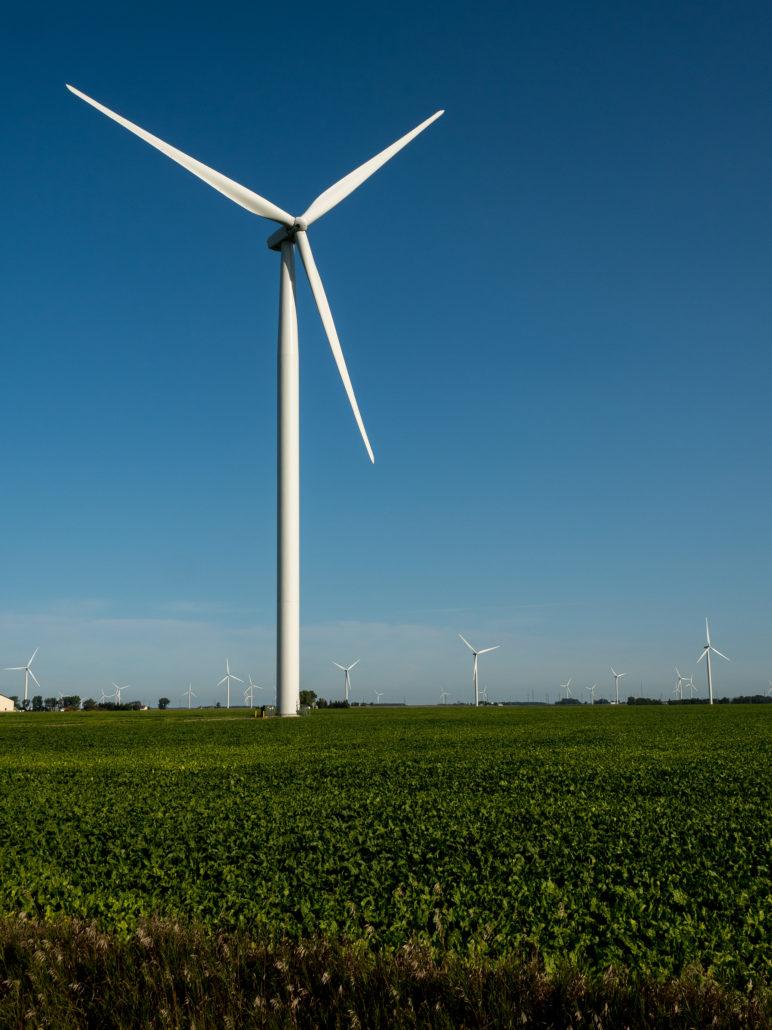You’re inside a wind turbine tower, standing at the foot of a ladder that reaches 374 feet to the top. Hooked up to a harness and ready to make the climb, you grab hold of the ladder and make your way up. Once you reach the top of the turbine, you’re worn out, but you still have to climb down – and you still have to go up two or three more towers that day.
Until recently, this was what our wind technicians experienced on a daily basis. Now, we have brand-new lifts installed in every turbine at our wind parks, including Meridian Wind, which will come online later this year.
“We were eager to get this new technology up and running,” said Dennis Buda, manager, Renewable Energy. “We did a test run at Pinnebog Wind to see how effective the lifts would be, and then decided to implement them across the board.”
Before the lifts were installed, our wind technicians used a feature called climb assist, which is basically a cable that takes some of the weight off your body as you go up the ladder. These cables needed a lot of maintenance, and not all the systems operated the same way.
“I’ve been in the industry for about eight years, and back when I started, we didn’t even have climb assist,” said Jesse Harvey, senior wind technician at Isabella Wind. “We were free climbing, which is rough on your body. Here at Isabella, we started out with the lifts right away. If we didn’t have a system like this, I don’t know how much longer I could continue climbing.”
The new lifts run on a rail that’s mounted to the ladder inside the wind turbine. Our wind technicians simply step on a platform, check the safety features, and the lift carries them up the tower.
“The lifts are loaded with safety features, which are honestly second to none in my opinion,” said Jesse. “There are so many things that make the lifts safer than the climb assist, and we can maintain them ourselves, to a degree. They also have a lot more longevity, with functions built in to preserve the lifts and keep them running efficiently.”
With the new lifts, our wind technicians can go up 10 towers a day without getting worn out and can stay in this physically demanding job for a greater length of time. The average person is only able to be a wind technician for about three years before moving on; most of our wind technicians have been working for double that.
“We strive to provide our technicians with as much knowledge as possible so we can be efficient and enjoy the work we do. But when your body is exhausted, your brain isn’t working properly. With the new lifts, we can run out of time in the day before we get tired. I truly feel like I could do this for another eight years, no problem.”
Curious to see how a wind technician would climb up a turbine? What about the view from the top? Check out the videos below!

